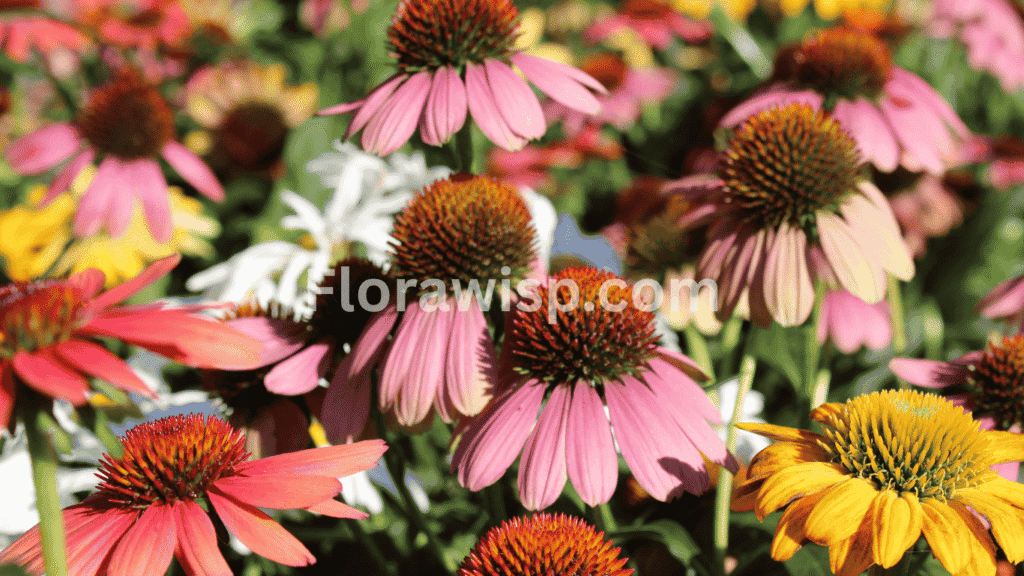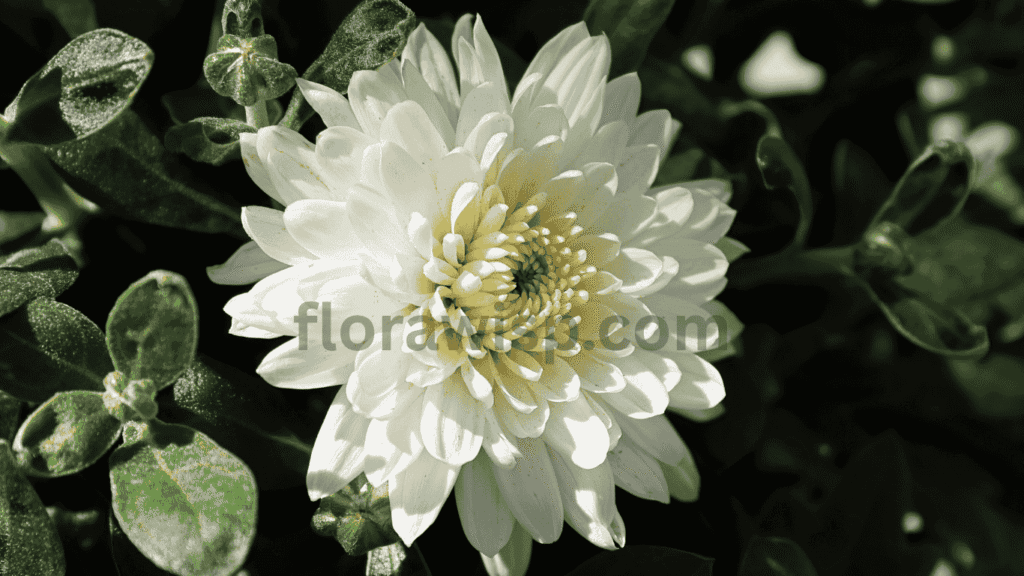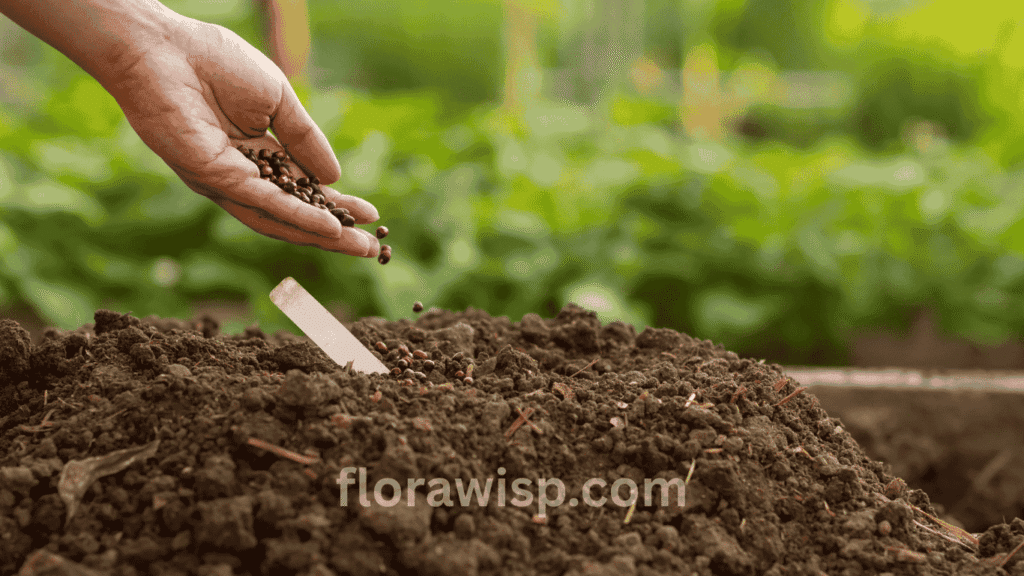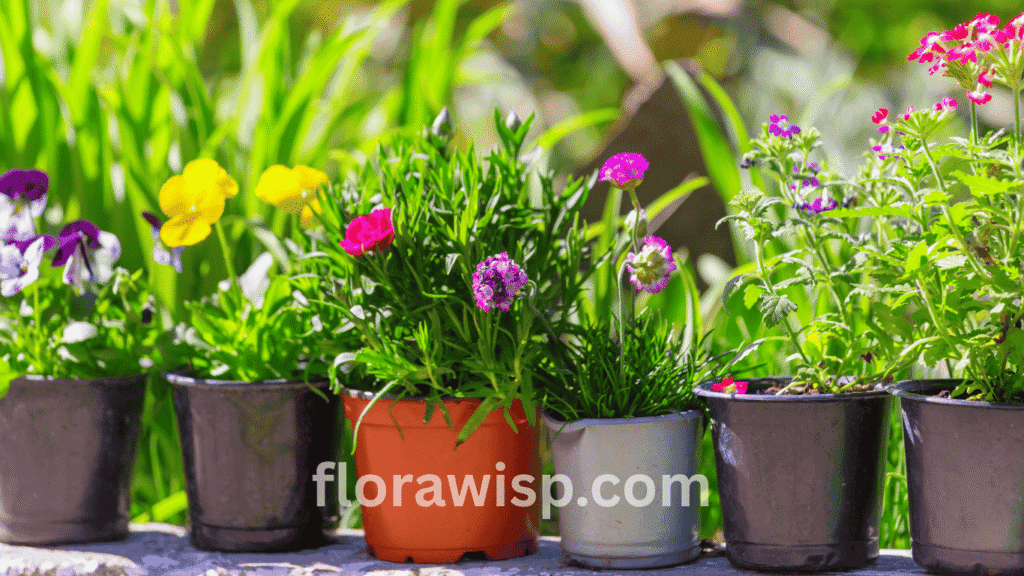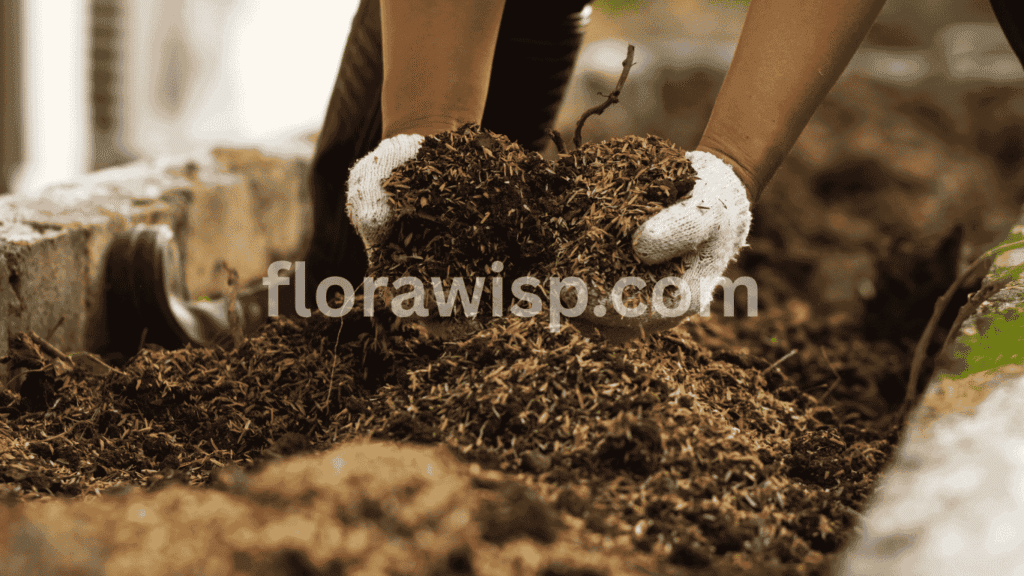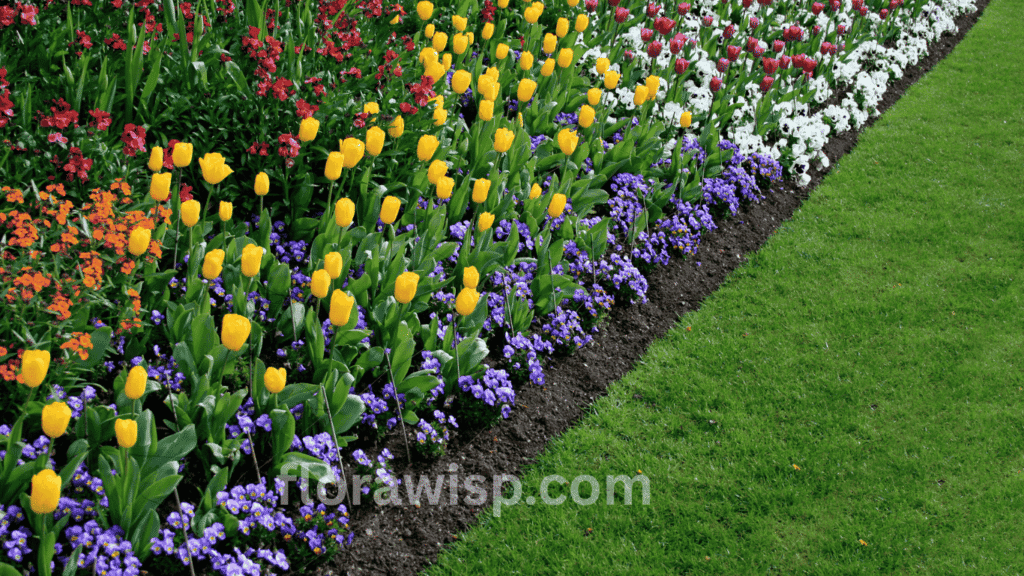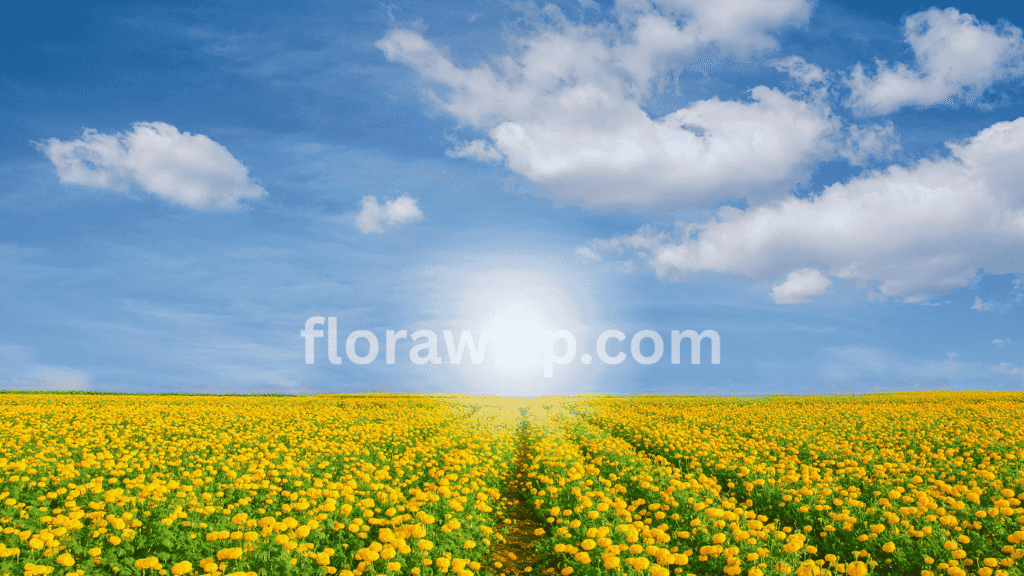Explore 25 stunning types of sunflowers for every garden. Discover rare, colorful, and pollinator-friendly varieties with growing tips and real experience. Few flowers capture the heart of a garden like the sunflower. From towering giants that command the landscape to compact, colorful varieties perfect for pots, sunflowers offer more than charm.
In This Article
Over the years, I’ve grown and admired many types of sunflowers, each with its own rhythm, resilience, and reward. These sun-loving blooms belong to the Asteraceae family, a diverse group that spans wild natives to hybrid cultivars bred for color, seed, or cut-flower perfection. Some follow the sun across the sky, others stand quietly in vibrant clusters, attracting bees, birds, and admiration.
Whether you’re planting pollinators, planning a sunflower border, or curious about rare varieties like chocolate cherry or purple sunflowers, understanding the differences among these sunflower types helps create a garden that blooms with both beauty and intention.
And if space is limited or you’re looking for more flexibility, consider Growing Sunflowers in Pots, where even balconies and patios can come alive with towering blooms or compact charm.
Types of Sunflowers: A Quick Overview
If there’s one flower that never fails to brighten a garden, it’s the sunflower. The many types of sunflowers ranging from tall and golden to dwarf and deep red offer more than just beauty. Over the years, I’ve experimented with different types of sunflower varieties across USDA Zones 5 to 9. Some thrived under the Texas sun, while others brought joy to my container garden in Oregon.
Botanical Lineage and Natural Diversity
Sunflowers belong to the genus Helianthus, part of the larger Asteraceae family, which also includes asters, daisies, and zinnias. According to the USDA and the National Sunflower Association, the Helianthus genus includes over 70 known species, ranging from sprawling native perennials to the popular annual giants many gardeners grow today.
Historical Roots in North America
Sunflowers are native to North America and have been cultivated for thousands of years. Archaeological evidence traces sunflower domestication back over 4,000 years to what is now the American Southwest and Central Plains, where Indigenous tribes grew them for food, oil, dye, and ceremonial use.
- Wild sunflower (Helianthus annuus) was the original species domesticated
- Native tribes like the Hopi and Mandan selected early varieties for seed size and oil content
- European settlers adopted sunflowers in the 16th and 17th centuries, leading to widespread cultivation
By the 19th century, sunflower cultivation expanded commercially in the U.S., especially in the Great Plains. Over time, this gave rise to various cultivated types of sunflowers, including those grown for seed, ornamental use, and wildlife attraction.
Symbolism and Modern Appeal
Sunflowers have long symbolized loyalty, strength, and positivity, inspired by their heliotropic nature turning their faces to follow the sun. From native meadows to modern garden beds, every sunflower variety adds its own layer of joy and utility.
Whether you’re growing pollinators, seed harvest, or pure color, understanding the types of sunflowers helps you choose with clarity and purpose.
Common Sunflower Varieties Every Gardener Should Know
When exploring the many types of sunflowers, some stand out for their adaptability, beauty, and reliability across U.S. growing zones. As a gardener who’s grown sunflowers in both suburban plots and small farm rows, I can say these tried-and-true varieties belong in every garden whether you’re new to growing or have seasons of experience behind you.
Common Sunflower (Helianthus annuus)
The backbone of most home gardens, the common sunflower is the classic tall, golden bloom most people recognize. With heights reaching 6–10 feet, it’s a favorite for sunny borders, wildlife gardens, and beginner growers. Its fast growth, striking face, and strong stem make it a seasonal favorite across Zones 4–9. It thrives in full sun and tolerates a range of soils, as long as drainage is good.
Mammoth Sunflower
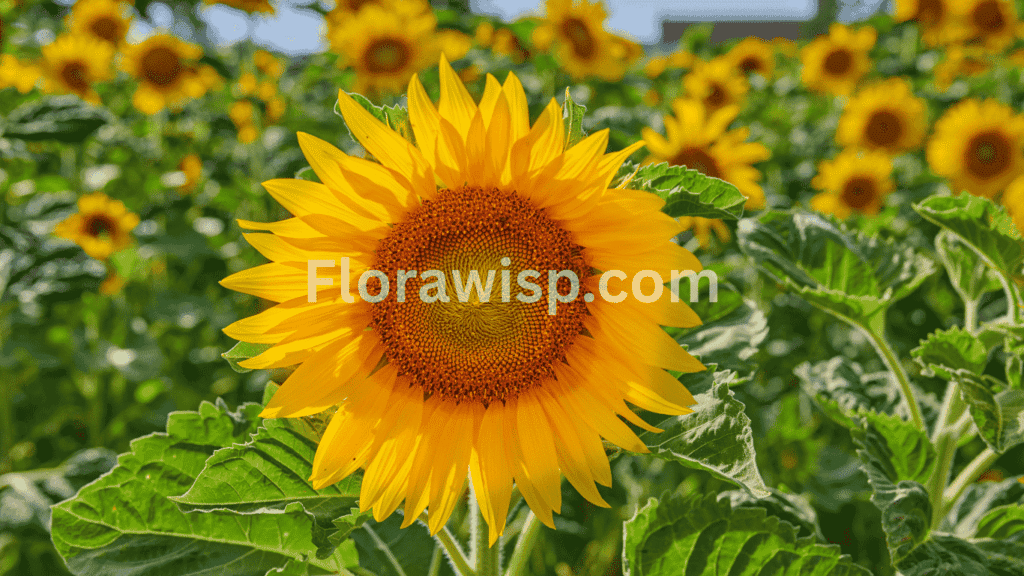
If you’re looking to make a bold impression, the mammoth sunflower is your go-to. These giants can reach up to 12 feet tall, with heads over 12 inches in diameter. I once planted a row along a fence in Zone 6. Their size isn’t just for show they produce black oil sunflower seeds, ideal for pressing oil or attracting birds.
Ideal for:
- Backyard borders
- Harvesting large seeds
- Shade screening or statement planting
Dwarf Sunflowers
Perfect for small spaces or container gardening, dwarf sunflowers such as ‘Teddy Bear,’ ‘Sunny Smile,’ and ‘Little Becka’ grow under 3 feet but still deliver vibrant, full-size blooms. On my urban patio, I grew them in 14-inch pots with excellent results. These types are great for kids, balconies, or sunny windowsills.
Highlights:
- Compact growth habit
- Great for pots or small beds
- Shorter bloom cycles for quick rewards
Black Oil Sunflower
The black oil sunflower is often grown for its high-yield, oil-rich seeds. This variety is both ornamental and functional, offering bright yellow petals and seed heads that mature quickly. The seeds known as black oil sunflower seeds are the preferred choice for bird seed mixes due to their thin shells and high fat content.
Bird Seed Sunflower
Closely related to black oil types, the bird seed sunflower is grown specifically to attract feathered visitors. I’ve planted them near my chicken run and birdbath; they create a lively feeding station while adding height and color. They’re easy to grow, require minimal care, and perform well even in less fertile soils.
Perennial Sunflower
Most garden sunflowers are annuals, but perennial sunflowers return year after year. Maximilian sunflower, for example, blooms in late summer through fall and can reach heights of 4–7 feet. These are great for naturalized gardens or low-maintenance borders. Their deep roots make them drought-tolerant and resilient in tough soils.
Growing Notes for All Varieties
- Zones: USDA Zones 4–9
- Sunlight: Full sun (6–8 hours daily)
- Soil: Well-draining, moderately fertile
- Spacing: Varies by type dwarfs need 6–12″, mammoths need 18–36″
Whether you’re growing sunflowers for pollinators, seed harvest, or sheer visual joy, these foundational types of sunflowers offer a rewarding experience for every kind of gardener. They’re hardy, cheerful, and deeply connected to American gardening traditions.
Rare and Colorful Sunflowers to Transform Your Garden
While the classic yellow sunflower has its place, today’s gardeners are searching for color, contrast, and conversation pieces. If you’re planting with intention and want your flower beds to feel elevated, these rare sunflowers deserve your attention. Each one brings a unique hue, shape, or texture that sets it apart offering far more than just aesthetics.
Red & Purple Sunflowers: Drama in Bloom
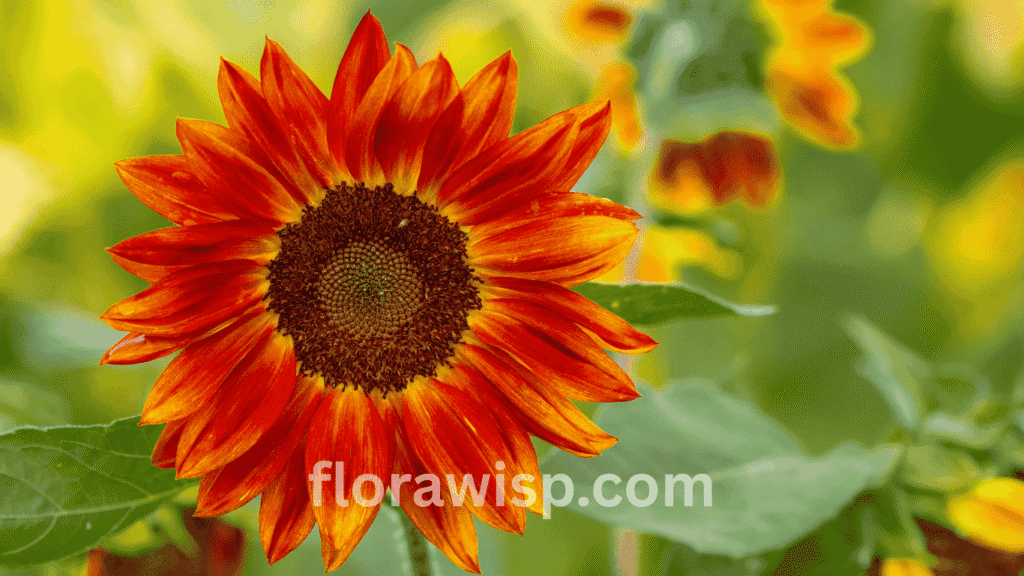
If you’re after depth and mood, red sunflowers like Moulin Rouge, Claret, and Prado Red offer velvety tones ranging from deep mahogany to burnt crimson. These varieties often have pollen-free centers, making them perfect for bouquets.
Purple sunflowers, such as Chianti, bring a wine-stained elegance to beds and containers. Their petals appear almost black in certain lighting and pair beautifully with silver-leafed foliage or pale echinacea blooms.
- Best zones: 5–9
- Height: 4–6 ft
- Bloom time: Mid to late summer
- Tip: Soak seeds overnight to improve germination for darker-petaled varieties.
White, Pink, and Blue-Tinted Varieties: Subtle Yet Striking
White sunflowers like Italian White feature creamy petals with soft yellow centers. They’re shorter (2–4 ft), branching well, and ideal for cottage-style gardens. These combine well with lavender, cosmos, or white alyssum.
Pink sunflowers are incredibly rare and usually appear in hybrid mixes or as pastel blush tones in select cultivars like Ms. Mars. While true blue sunflowers don’t exist naturally, some breeders have developed indigo-toned hybrids that carry a blue-grey sheen especially in overcast climates.
- Best zones: 6–9
- Use case: Wedding gardens, pastel-themed borders
- Tip: Start from seed indoors to control color variation.
Chocolate Cherry & Black Sunflowers: Bold Elegance
The chocolate cherry sunflower is a favorite among specialty growers. It blooms in rich maroon with dark chocolate undertones and has multi-branching stems for longer bloom periods. Bees adore it, and it’s often the star of fall bouquets.
Black sunflowers like Black Beauty or dark strains of Claret are show-stopping with their nearly gothic, ink-colored petals. They add architectural contrast in minimalist or monochrome beds.
Orange Sunflower: Autumn’s Warmest Bloom
Bright and fiery, orange sunflowers like Orange Hobbit and Sunrich Orange feel made for autumn. These varieties bloom earlier than deeper-hued types and work well in warm-toned pollinator gardens.
- Height: 3–5 ft
- Zones: 5–9
- Use case: Seasonal borders, cutting gardens
If you want your garden to reflect more than just beauty or simply want color that doesn’t fade into the background these bold, vibrant types of sunflowers bring the contrast, structure, and personality that make gardens memorable.
Iconic Named Sunflowers with Distinct Traits
When gardeners talk about the most recognizable and beloved types of sunflowers, named varieties always rise to the top. These cultivars aren’t just popular because of their looks; they’ve earned their place in gardens due to unique traits like compact growth, drought tolerance, pollinator attraction, or towering height. Having worked with all of these firsthand, I can confidently say these are the ones people return to season after season.
Teddy Bear Sunflower
The teddy bear sunflower is one of the most adored dwarf varieties in ornamental gardening. Growing just 2–3 feet tall, its fully double, fluffy blooms feel more like pom-poms than the traditional petal layout of a sunflower.
- Ideal zones: 4–9
- Bloom time: Mid to late summer
- Best for: Raised beds, containers, school and sensory gardens
- Notable trait: Pollen-free perfect for allergy-sensitive areas
I’ve planted teddy bear sunflowers around play areas and in children’s garden beds. Their plush appearance and compact nature make them easy to maintain, even in pots. They’re also perfect for cutting and drying.
Mexican Sunflower (Tithonia rotundifolia)
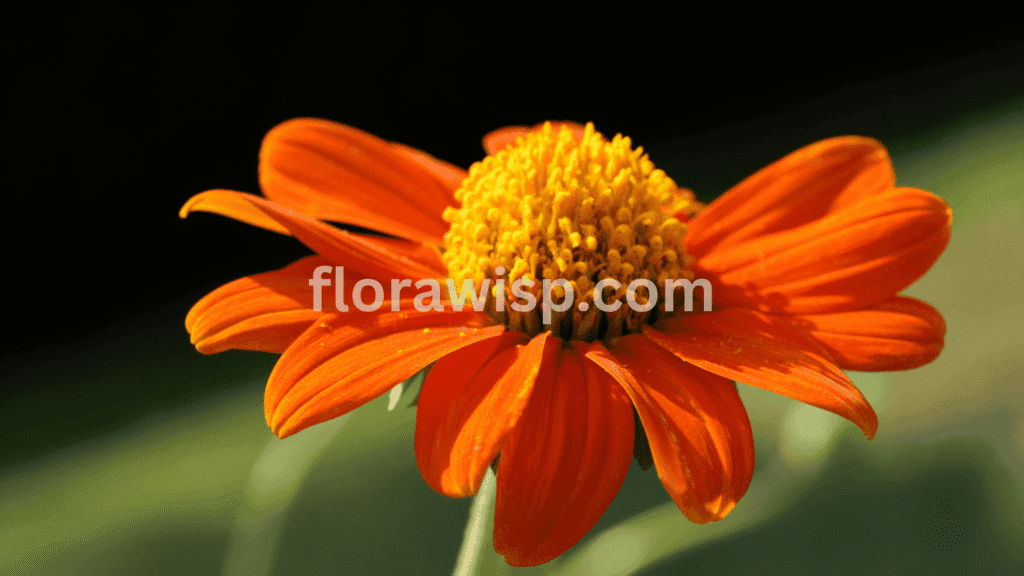
While not a true member of the Helianthus genus, the Mexican sunflower (Tithonia rotundifolia) earns its place alongside classic sunflower types thanks to its striking appearance and unmatched pollinator appeal. Native to Mexico and Central America, this sunflower relative belongs to the broader Asteraceae family but is botanically distinct from traditional sunflowers.
Its vivid orange-red petals set it apart from yellow sunflower varieties, creating a fiery presence in the garden. I’ve planted it along the sunny borders of my Zone 8 landscape, and it quickly became the star of the pollinator section drawing in monarch butterflies, swallowtails, native bees, and rarely hummingbirds.
Quick Facts:
- Zones: 5–10
- Height: 3 to 6 feet
- Bloom Period: Mid-summer through frost
- Soil Needs: Well-drained, low to moderate fertility
- Best For: Pollinator gardens, drought-tolerant beds, vibrant summer borders
Unlike true Helianthus species, Mexican sunflowers prefer lean soil and dry conditions. It blooms reliably during hot spells and reseeds generously. I’ve found it especially useful in pollinator-focused gardens where prolonged bloom time matters. By early fall, the tall branching plants become a hub of winged visitors, and its self-sowing habit ensures a return the following season with little effort.
Though it’s not technically one of the botanical types of sunflowers, it’s often included in mixed sunflower displays and pollinator seed blends because of its form and value.
Maximilian Sunflower (Helianthus maximiliani)
The maximilian sunflower is a native North American perennial that brings both structure and seasonal interest to native and prairie-style landscapes. Named after Prince Maximilian of Wied, who documented it during his North American explorations, it can reach up to 10 feet in fertile conditions.
- Zones: 4–9
- Height: 5–10 feet
- Best for: Naturalized gardens, fall blooms, wildlife areas
- Bonus: Deer-resistant and excellent for erosion control
What makes Maximilian unique among the types of sunflowers is its ability to thrive year after year, blooming in late summer to fall when most sunflowers are done. I’ve used it along fence lines and to create natural screens. It’s stunning in the golden hour.
Woodland & Swamp Sunflowers: Thrive in Tough, Moist Conditions
These lesser-known native sunflowers are some of the most underrated types of sunflowers perfect for shady corners and wetter soil where traditional sunflowers won’t perform.
Woodland Sunflower (Helianthus divaricatus)
- Grows well in partial shade
- Drought-tolerant once established
- Spreads by rhizomes, ideal for natural groundcover
Swamp Sunflower (Helianthus angustifolius)
- Loves wet, boggy soil
- Bright yellow blooms in late summer and fall
- Can grow up to 8 feet tall
I use swamp sunflowers in a low-lying part of my garden where few ornamentals thrive. They draw pollinators even late in the season and require almost no upkeep.
Giant Sunflower: Towering Beauty with Impressive Seeds
No list of iconic types of sunflowers is complete without the giant sunflower often referred to as Russian Giant or Mammoth. These sunflowers can soar past 12–15 feet tall, with seed heads up to a foot across.
- Zones: 3–9
- Uses: Seed harvesting, vertical interest, children’s gardens
- Support: Must be staked in windy areas
- Soil: Rich, compost-amended soil for best height
I once planted a row of giant sunflowers along my shed in Zone 6. They grew taller than the roofline and became a neighborhood spectacle. The seeds fed birds all winter.
Whether you want a soft-textured dwarf, a wildlife haven, or a plant that towers above your garden gate, these types of sunflowers offer both beauty and function. Beyond their ornamental charm, they support local ecosystems, teach children the joys of gardening, and add structure and rhythm to seasonal planting.
These aren’t just sunflowers, they’re garden tools, living sculptures, and ecosystem boosters.
Types of Sunflowers Seeds and Their Use
When we think about the many types of sunflowers, we often focus on height, petal color, or bloom size. But beneath those cheerful faces lies another level of purpose: the seeds. Whether you’re growing sunflowers to harvest, to sprout, or to support pollinators and birds, choosing the Best sunflower seeds makes all the difference.
This is where function meets beauty and where gardeners need clarity more than hype.
Edible & Nutritional Use
If you’ve never grown sunflower sprouts, you’re missing one of the most nutrient-dense, easy-to-grow microgreens. These are harvested when the seedling is just a few inches tall before the true leaves emerge. I grow trays of sunflower sprout greens in my kitchen window, cutting them for salads and smoothies. They deliver a mild, nutty flavor and are packed with protein, folate, and vitamins A, C, and E.
To grow sunflower sprouts, you’ll need raw, untreated black oil sunflower seeds or specialty sprouting seeds labeled for consumption. Avoid roasted or salted seed types they won’t germinate.
Black Oil Sunflower Seed
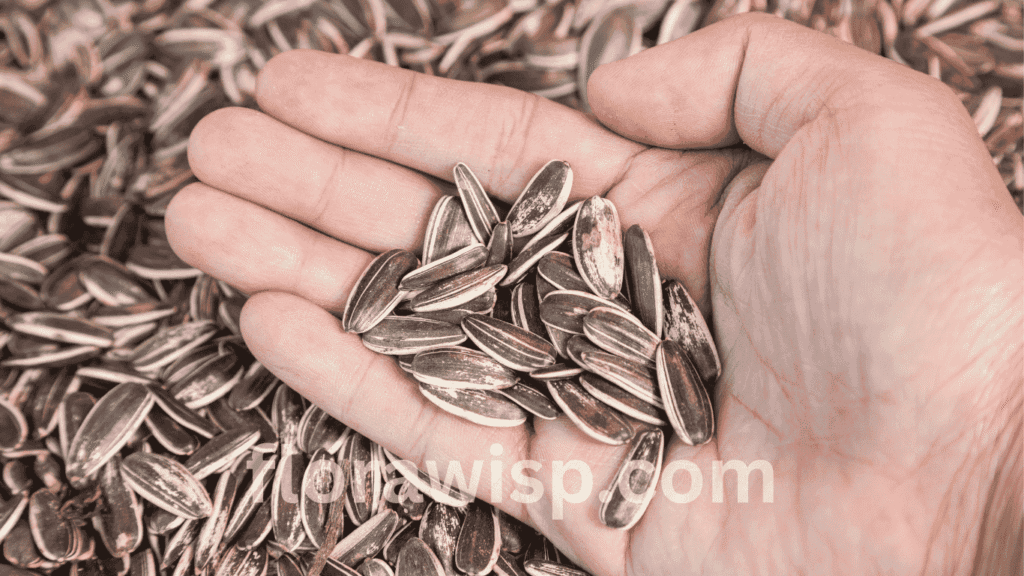
When it comes to types of sunflowers seeds used in bird seed mixes and oil production, black oil sunflower seed dominates the market. These seeds have thin shells and high oil content, making them ideal for:
- Wild bird feed (especially for finches, chickadees, cardinals)
- Cold-pressed sunflower oil
- Livestock forage
- High-yield, drought-tolerant garden varieties
I often plant black oil types along the back row of my vegetable patch they grow tall, bloom reliably, and feed my winter birds. Their plants are hardy, and they bloom even in slightly poor soil.
Purple Sunflower Seeds
A relatively new and visually striking option, purple sunflower seeds are hybrids bred for both ornamental and edible value. While not naturally purple inside, the seed coats can take on a subtle violet hue. These are less common in feed stores but growing in popularity among heirloom seed savers and organic gardeners.
They often belong to specialty lines designed for both sprouting and flower display, great if you’re cultivating for both looks and leafy greens.
Can You Eat Sunflower Seed Shells?
Many gardeners ask: can you eat sunflower seed shells? Technically, yes but it’s not advisable. The shells are fibrous and tough on digestion, especially in large quantities. Eating the whole seed can cause gastrointestinal discomfort or even obstruction in rare cases.
For home-grown sunflowers, always harvest, dry, and de-shell seeds if your goal is edible use. I personally toast and salt my shelled seeds. It’s simple and rewarding after a long growing season.
Sunflowers in Bouquets, Weddings & Home Decor
Among the many types of sunflowers, some varieties shine not just in gardens but as stars of floral arrangements. Their bold shape, rich hues, and strong stems make them a top pick for florists, event planners, and DIY decorators. Over the years, I’ve used sunflowers in everything from table centerpieces to bridal bouquets and the feedback is always the same: vibrant, uplifting, and unforgettable.
Creating a Sunflower Bouquet That Feels Intentional
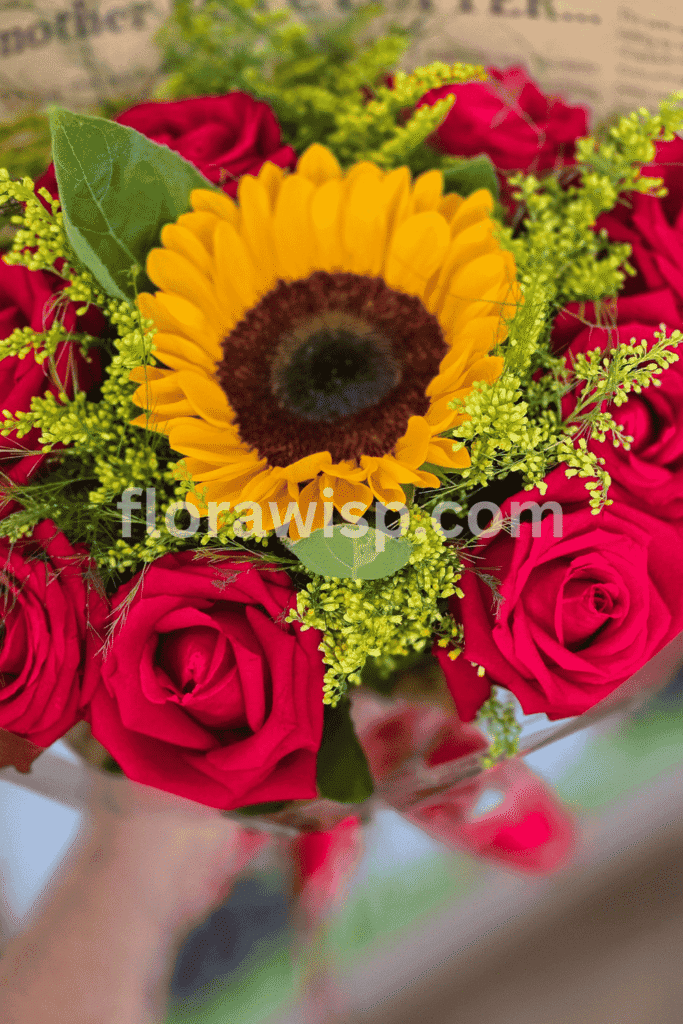
A sunflower bouquet immediately sets a warm, welcoming tone. For summer and fall weddings, I often use varieties like Sunrich Orange or ProCut Gold known for their long vase life and pollen-free blooms.
To soften the look, I blend in dusty eucalyptus, baby’s breath, or lavender. When I want to create more visual drama, I use a bouquet of sunflowers paired with other blooms like zinnias or lisianthus.
One of the most requested combinations I’ve worked with is the sunflower and rose bouquet. The boldness of the sunflower and the softness of roses strike a beautiful balance. Whether you style it as sunflowers and roses side-by-side or a more blended look like roses and sunflowers, the result feels rustic yet romantic.
Where to Purchase Sunflowers for Arrangements
When sourcing sunflowers for your floral designs, quality and timing matter. Here’s how I approach it based on years of hands-on experience:
✓ Local farmers’ markets or flower farms: Best for fresh, firm-stemmed sunflowers during peak season. You get vibrant blooms ideal for bouquets and table settings.
✓ Reputable online seed and cut-flower suppliers: Great for accessing rare or specialty sunflower varieties. Just make sure to check USDA zone compatibility if planting.
✓ Floral shops with seasonal combos: Many local florists offer ready-made arrangements featuring sunflowers and roses, perfect for weddings, gifting, or decor.
✓ Know what you need: Choose sunflowers known for strong stems, long vase life, and minimal pollen if you’re arranging bouquets. This helps them hold up better indoors.
Sunflowers aren’t just cheerful additions; they’re focal flowers that anchor your entire arrangement. Knowing which types of sunflowers perform best in vases ensures your floral design lasts longer and looks purposeful.
FAQs
Q1: What do sunflowers symbolize?
Sunflowers symbolize joy, loyalty, and resilience across many cultures. Their heliotropic nature following the sun has long been associated with optimism and growth. In my own garden, the first sunflower bloom marks the true beginning of summer. They remind me that light and persistence always pay off. From Native American traditions to Victorian flower language, sunflowers stand for steadfastness and positive energy.
Q2: Which sunflower is best for pollinators?
The best sunflowers for pollinators are Mexican sunflower (Tithonia rotundifolia) and Maximilian sunflower (Helianthus maximiliani). These varieties offer nectar-rich blooms that attract bees, butterflies, and hummingbirds. I’ve planted Mexican sunflowers along fence lines, and by late July, they were buzzing with native bees from sunrise to sunset. Their long bloom period ensures consistent support for pollinator activity well into the fall.
Q3: Can sunflowers grow in pots?
Yes, sunflowers can grow in pots, especially compact types of sunflowers, like Teddy Bear and Dwarf Sunspot. I’ve grown these successfully on patios in USDA Zone 8. Choose containers at least 12 inches deep, use loose, nutrient-rich soil, and ensure they receive 6–8 hours of sunlight daily. Consistent watering and occasional staking will help maintain sturdy growth and strong blooms.
Q4: Are sunflowers good for bees?
Sunflowers are excellent for bees, especially open-pollinated varieties like Black Oil and Mexican sunflower. These types produce high levels of pollen and nectar, supporting honeybees and native pollinators throughout their active season. I’ve observed that sunflowers planted in clusters attract up to three times more bees than scattered individuals, making them perfect for building a thriving pollinator garden.
Q5: What is the best soil for sunflowers?
The best soil for sunflowers is well-draining, loose, and slightly acidic to neutral (pH 6.0 to 7.5). I’ve had the best results using sandy loam enriched with compost. Poor drainage or compacted clay can stunt root development and weaken stems. Adding organic matter improves structure and helps sunflowers establish quickly and bloom fully throughout the growing season.
Final Thoughts
Exploring the types of sunflowers opens the door to a world of color, function, and purpose. From bold yellow giants to soft-petaled rare varieties, each sunflower has something meaningful to offer. I’ve grown them in rows, pots, and wild corners of my garden and each variety brought something different: food for birds, nectar for bees, or beauty for the soul.
Whether you plant sunflowers for pollination, decor, seed harvesting, or just the joy they bring there’s always the right type waiting to bloom in your space. Trust the process, plant with care, and let each sunflower show you how to grow with purpose. If you’re new to gardening, don’t miss our guide on How to Plant Flowers from Seeds, it’s the perfect place to begin.
References
United States Department of Agriculture (USDA)
National Sunflower Association (NSA)
Missouri Botanical Garden Plant Finder
Gardener, M.Sc. Horticulture
Elara Bennet is a gardening writer from Austin, TX, passionate about sustainable lawns and blooms. Read full bio →

